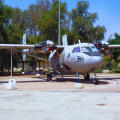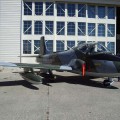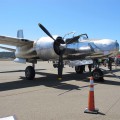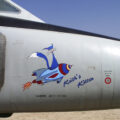
Boulton Paul Defiant | |
|---|---|
| Country | UK |
| Role | Two-seat fighter, night fighter, trainer |
| First flight | 11 August 1937 |
| Built | 1064 |
The Boulton Paul Defiant was a British interceptor aircraft that served with the Royal Air Force (RAF) during World War II. The Defiant was designed and built by Boulton Paul Aircraft as a “turret fighter”, without any forward-firing guns, a concept successfully used in the First World War-era Bristol F.2 Fighter and also implemented by the Royal Navy’s Blackburn Roc. In combat, the Defiant was found to be reasonably effective at its intended task of destroying bombers but was vulnerable to the Luftwaffe’s more manoeuvrable, single-seat Messerschmitt Bf 109 fighters. The lack of forward-firing armament proved to be a great weakness in daylight combat and its potential was realised only when it was converted to night fighting. It was supplanted in the night fighter role by the Bristol Beaufighter and de Havilland Mosquito. The Defiant found use in gunnery training, target towing, electronic countermeasures and air-sea rescue. Among RAF pilots it had the nickname “Daffy”.
| Boulton Paul Defiant I Walk Around | |
|---|---|
| Photographer | Cees Hendriks |
| Localisation | Unknow |
| Photos | 25 |
Related kits:

Find kits on eBay:
The Boulton Paul Defiant was a British fighter aircraft that saw combat during the early stages of World War II. It was designed as a “turret fighter”, meaning that it had a four-gun turret mounted behind the pilot, instead of fixed forward-firing guns. The idea was to allow the Defiant to attack enemy bombers from any angle, without having to maneuver into a firing position. The Defiant was also equipped with a retractable landing gear and a variable-pitch propeller, which improved its performance and handling.
The Defiant first flew in August 1937 and entered service with the Royal Air Force in December 1939. It initially achieved some success against German bombers during the Battle of France and the Battle of Britain, as the enemy pilots were surprised by its unusual armament and often mistook it for a Hurricane. However, the Defiant soon proved vulnerable to more agile and faster single-seat fighters, such as the Messerschmitt Bf 109 and the Focke-Wulf Fw 190. The Defiant’s turret had a limited traverse and elevation, and its weight and drag reduced the aircraft’s speed and maneuverability. The Defiant also lacked any forward-firing guns, which made it difficult to engage other fighters in a dogfight.
As a result of its poor performance as a day fighter, the Defiant was withdrawn from frontline service by mid-1941 and reassigned to night fighter and training roles. It was also used for air-sea rescue, target towing, electronic warfare, and special operations. The Defiant was eventually phased out of service by 1945, having been replaced by more advanced aircraft such as the Mosquito and the Beaufighter. The Defiant was one of the few British aircraft to have a turret as its main armament, and although it failed to live up to its expectations, it played a significant role in the early air war over Europe.
Views : 3012









